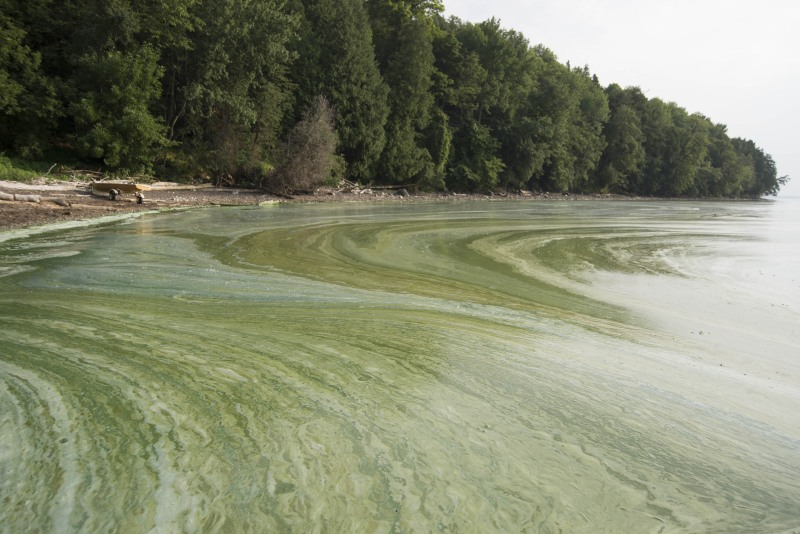As planting season began in May, non-organic corn farmers around the state began applying one of the most common soil and surface-water contaminants in the United States, the herbicide atrazine.1 Environmental advocates are worried because they say it will cause serious harm to Vermont’s aquatic life. Researchers believe it was this chemical that caused or contributed to Missisquoi Bay’s intersex smallmouth bass; more than half the male fish in Missisquoi Bay bear eggs, and atrazine is known to cause abnormal feminization of various animals. 2
https://www.youtube.com/watch?v=YifOLZ2aZCk
Recent atrazine levels in streams feeding Missisquoi Bay and St. Albans Bay were found to be high enough to be toxic to plant life (officials remain unworried); the study conducted found levels up to 26 parts per billion in 2015.
RELATED ARTICLE:
Atrazine will be applied to cornfields around the state through June and is found in Vermont streams when storms cause rainwater runoff from fields where it’s been applied. Between rainstorms, the agency doesn’t monitor atrazine levels. However, previous monitoring has shown that concentrations of the chemical decrease dramatically once the rain stops, often to the point of being undetectable. (At that point it’s all drained into streams and the water table.)
“The chemical is acutely toxic to nonvascular plants, like algae, at levels below 1 part per billion, according to the EPA. It’s acutely toxic to vascular plants, such as duckweed, at levels below 5 parts per billion. The EPA defines “acute” in this instance as relating to exposures of fewer than 10 days.
…this means some duckweed and algae might die off. But there’s already far too much algae in St. Albans Bay and Missisquoi Bay, where the atrazine levels are the highest, he said. Blue-green algae blooms that occur annually in these areas are primarily because of phosphorus in fertilizer farmers use that runs off into nearby surface waters.” 3
At this point, Giguere, agrichemical program manager forthe Agency of Agriculture, Food and Markets doesn’t see atrazine as a concern, but the executive director of Lake Champlain International, James Ehlers, does, “His remarks are everything that’s wrong with the Agency of Agriculture’s attitude toward the natural world. Blue-green algae is not algae, it’s bacteria. The Agency of Ag continues to flash their ignorance and wear it as if it’s a badge of honor. That the Agency of Agriculture would be unaware of the distinction (between cyanobacteria and algae) is extremely unsettling. Algae is part of the food chain, and duckweed is part of the habitat.” 4
An additional concern with atrazine is when its concentrations are highest in Vermont waterways: when many fish and amphibian species are hatching and therefore most susceptible to developing intersex traits.
Although Giguere (and others) claim that atrazine is among the most highly regulated substances in Vermont, “the Lake Champlain Basin Program report, written by Giguere’s former employee, retired Agency of Agriculture chemist Nat Shambaugh, states that there are no regulatory limits governing what concentrations of atrazine and other pesticides are allowed in surface waters.”
RELATED ARTICLES:
- Steer Clear of This Cancer Trap, No Matter What the EPA Says
- Syngenta Terrorized Scientist for 15 Years to Quell Concerns About Atrazine
Atrazine is banned in Europe and not safe- not for our ecosystem or watershed. This just seems to be more proof that the EPA and Big Ag are more concerned with the almighty dollar than our world and health.












